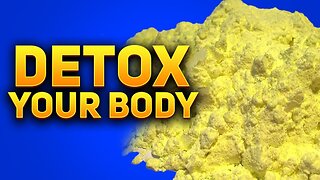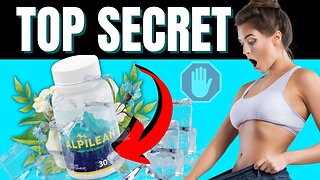Sulforaphane: Benefits, Side Effects, Where to BUY & Daily Dosage
Sulforaphane is a natural plant compound found in many cruciferous vegetables and has been linked to certain health benefits, such as improved heart health, digestion, and it may help improve constipation and protect against sun damage.
Renue by Science 10% Discount Code: MYNMN (https://renuebyscience.com/?rfsn=5692699.331801&coupon-code=MYNMN)
DoNotAge.org 10% Discount Code: MYNMN (https://bit.ly/2VBDgNt)
I hope you enjoy my content and find it interesting or informative, if so, please consider supporting the channel by signing up to the one you prefer:
*Buy me a Kofi: https://ko-fi.com/mynmnexperiment
*Patreon: https://bit.ly/3hhfjl5
*Subscribestar: https://bit.ly/3psYo23
My Current Anti-Aging Protocol:
• 1.5 grams of NMN (https://bit.ly/3c2Fxt8)
• 1.5 grams of Trans-resveratrol (Tue, Thu & Sat) (https://bit.ly/3yxeqy2)
• 1.5 grams of Berberine (https://bit.ly/3O0v5zq)
• 1.5 grams of TMG (https://bit.ly/3oe1Ted)
• 5,000 IU (International Units) of vitamin D3 (https://bit.ly/3P32hYH)
• 120 mcg (micrograms) of vitamin K2 (Mk 7) (https://bit.ly/3PhkBgn)
• 250mg Magnesium (L-Threonate) (https://bit.ly/3O4pZ5o)
• 200mg high molecular weight hyaluronic acid (https://bit.ly/3P0Z4c2)
• 2,400mg of Fisetin, on the 1st, 2nd & 3rd of each month (https://bit.ly/3P2rSB0)
• 2,400mg of Quercetin, on the 1st, 2nd & 3rd of each month (https://bit.ly/3IzulAy)
• 81mg of aspirin (https://bit.ly/3uFjtem)
https://pubmed.ncbi.nlm.nih.gov/21194251/
https://pubmed.ncbi.nlm.nih.gov/18950181/
https://pubmed.ncbi.nlm.nih.gov/22471240/
https://www.ncbi.nlm.nih.gov/pmc/articles/PMC2722699/
https://www.ncbi.nlm.nih.gov/pmc/articles/PMC5456215/
https://pubmed.ncbi.nlm.nih.gov/20388854/
https://pubmed.ncbi.nlm.nih.gov/14514658/
https://pubmed.ncbi.nlm.nih.gov/29977456/
https://pubmed.ncbi.nlm.nih.gov/25364882/
https://pubmed.ncbi.nlm.nih.gov/18504070/
https://pubmed.ncbi.nlm.nih.gov/22328735/
https://pubmed.ncbi.nlm.nih.gov/23679237/
https://pubmed.ncbi.nlm.nih.gov/23199123/
https://pubmed.ncbi.nlm.nih.gov/26583056/
https://pubmed.ncbi.nlm.nih.gov/19729611/
https://pubmed.ncbi.nlm.nih.gov/22052072/
https://pubmed.ncbi.nlm.nih.gov/28615356/
https://pubmed.ncbi.nlm.nih.gov/30091431/
https://pubmed.ncbi.nlm.nih.gov/26165427/
https://pubmed.ncbi.nlm.nih.gov/25313065/
https://pubmed.ncbi.nlm.nih.gov/26799467/
https://pubmed.ncbi.nlm.nih.gov/24121007/
https://pubmed.ncbi.nlm.nih.gov/17956979/
https://pubmed.ncbi.nlm.nih.gov/28965607/
https://pubmed.ncbi.nlm.nih.gov/28189971/
https://pubmed.ncbi.nlm.nih.gov/27693416/
https://pubmed.ncbi.nlm.nih.gov/29371757/
https://n.neurology.org/content/90/15_Supplement/N1.002
Sulforaphane is a sulfur-rich compound found in cruciferous vegetables such as Brussels sprouts, broccoli and cauliflower. It has been shown to provide powerful health benefits. In these foods, it’s in the inactive form glucoraphanin that belongs to the glucosinolate family of plant compounds. Sulforaphane is activated when glucoraphanin comes into contact with myrosinase, a family of enzymes that play a role in the defense response of plants. Myrosinase enzymes are only released and activated when a plant is damaged. Therefore, cruciferous vegetables must be cut, chopped, or chewed to release myrosinase and activate the sulforaphane. Raw vegetables have the highest levels of sulforaphane. One study found that raw broccoli had ten times more sulforaphane than cooked broccoli. Steaming vegetables for one to three minutes may be the best way to optimize sulforaphane levels when cooking. It’s best to cook the vegetables below 284˚F (140˚C), as exceeding this temperature results in a loss of glucosinolates. For this reason, it’s best to avoid boiling or microwaving cruciferous vegetables. Instead, eat them raw or lightly steamed to maximize their sulforaphane content.
Sulforaphane has been shown to have anticancer properties in a number of test-tube and animal studies, reducing both the size and number of various types of cancer cells.
Sulforaphane may also prevent cancer cell growth by releasing antioxidant and detoxification enzymes that protect against carcinogens.
Keep in mind that these studies use a concentrated form of sulforaphane, so it’s unclear whether the amounts found in fresh foods have the same effect. It is still unclear whether sulforaphane could be used in a clinical setting to lower cancer risk and reduce cancer growth in humans.
DISCLAIMER: This video and description contain discount codes, which means that if you use the code, I will receive a small commission.
FAIR-USE COPYRIGHT DISCLAIMER
Copyright Disclaimer Under Section 107 of the Copyright Act 1976, allowance is made for "fair use" for purposes such as criticism, commenting, news reporting, teaching, scholarship, and research. Fair use is a use permitted by copyright statute that might otherwise be infringing. Non-profit, educational, or personal use tips the balance in favor of fair use. #SULFORAPHANE #DoNotAge #ProHealthLongevity
-
 6:26
6:26
Rogue Nation Eternal Militia
1 year agoWhat Are The Benefits of Sulforaphane for the Human Body?
878 -
 9:26
9:26
Dr. Eric Berg
1 year agoWhy Does Sulforaphane Cure Autism Symptoms_
2.67K3 -
 39:23
39:23
nutritionworld
1 year agoNWP Ep. 24 | The Healing Power of Sulforaphane
31 -
![Bromeilain Benefits [Quercetin, Supplements, Dosage & Side Effects]](https://hugh.cdn.rumble.cloud/s/s8/1/9/l/G/m/9lGmk.0kob-small-Bromeilain-Benefits-Quercet.jpg) 0:38
0:38
Dr. Tom Biernacki
1 year ago $0.10 earnedBromeilain Benefits [Quercetin, Supplements, Dosage & Side Effects]
303 -
 3:36
3:36
Flower of Life Meditations
1 year agoCOMBAT AGING: 5 Supplements Recommended by Dr. David Sinclair
215 -
 6:48
6:48
esasellh
1 year ago(👀 NOW) Alpilean - Alpilean REVIEWS - Alpilean WEIGHT LOSS - does Alpilean WORK - Alpilean Capsules
15 -
![Butcher's Broom Extract Supplement [Dosage & Side Effects]](https://hugh.cdn.rumble.cloud/s/s8/1/L/b/F/m/LbFmk.0kob-small-Butchers-Broom-Extract-Supp.jpg) 0:37
0:37
Dr. Tom Biernacki
1 year ago $0.01 earnedButcher's Broom Extract Supplement [Dosage & Side Effects]
118 -
 6:48
6:48
esasellh
1 year agoAlpilean - Alpilean REVIEWS - Alpilean WEIGHT LOSS - DOES Alpilean WORK – Alpilean PILLS
23 -
 1:01:02
1:01:02
Mind Body Peak Performance Podcast
1 year agoBerberine & Sulforaphane for Anti-Aging, Sleep, Weight, Hair, Brain & More | David Roberts @MaraLabs
3512 -
 4:23
4:23
top trends reviews
1 year agoALPILEAN - Alpilean Review (( BEWARE 2023!! )) Alpilean Reviews - ALPILEAN WEIGHT LOSS SUPPLEMENT
44